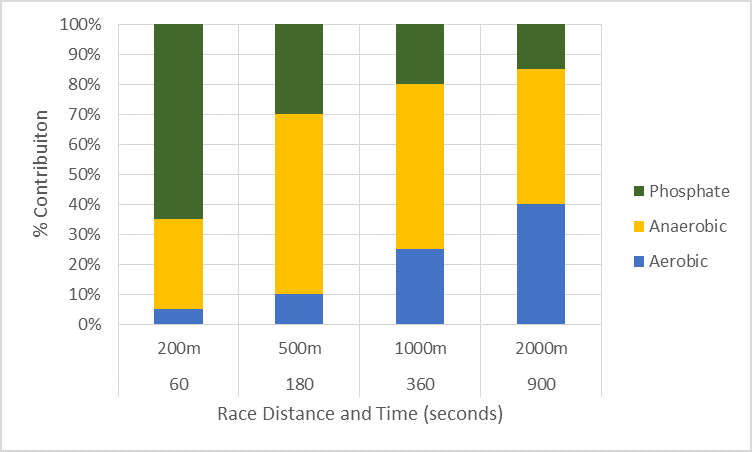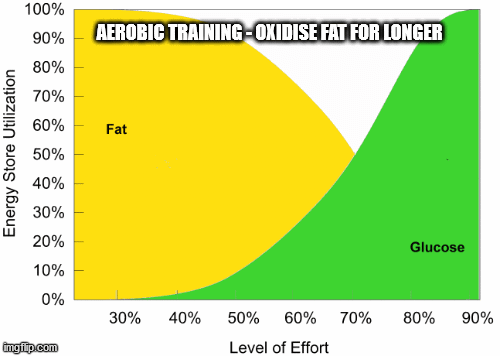In past posts we have discussed the energy systems that we use. In this post we are going to cover these same energy systems and what part each plays in our different race scenarios.
Should our training regime be the same if we are training for 200m, 500m, 1000m or 2000m races? What issues could arise if we only train for one of these race distances?
Review
There are 3 energy systems that our bodies use:
- The Aerobic System – utilizes fats and sugar to fuel your muscles. Kicks in after 2 to 3 minutes after exercise is started.
- The Anaerobic System – produces lactic acid. It is the first energy system we draw on at the start of exercise.
- The Phosphate System – does not use oxygen, glucose or produce lactic acid. 10 seconds worth of energy.
Mix of Energy Systems in Dragon Boat Races
The contribution made by each energy system in each race can be best displayed in a graph.

This figure would suggest that you should only train the energy systems in the proportions that you need for your race length. For example if you are a 200m specialist then you don’t need to train your aerobic system much at all. If anything you should concentrate on training your Phosphate and Anaerobic systems.
That said, put your hands up if you only race one distance in dragon boating AND your club only trains for that distance. *crickets* Except for maybe international racers like the Auroras.
So in reality, pretty much all of us need to train for most, if not all of the race distances. That now begs the question, what actually happens to each of these energy systems when we train? What are we aiming for?
Training the Aerobic System
Aerobic exercise increases the number and density of capillaries (the tiny blood vessels within the muscles).
As a result, more oxygen-rich blood can be supplied to the muscles, and “waste” by-products are removed more efficiently.
Aerobic exercise will also increase the heart’s strength and stroke volume.
Exercising makes the muscles’ metabolic systems use energy more economically.
The mitochondria in the muscles increase in number and density, allowing more capacity to burn fat and glucose. The metabolic pathways also become more efficient; allowing the body to oxidize fat for a longer time.

Training the Anaerobic System
…. The remainder of this content is for members only…













